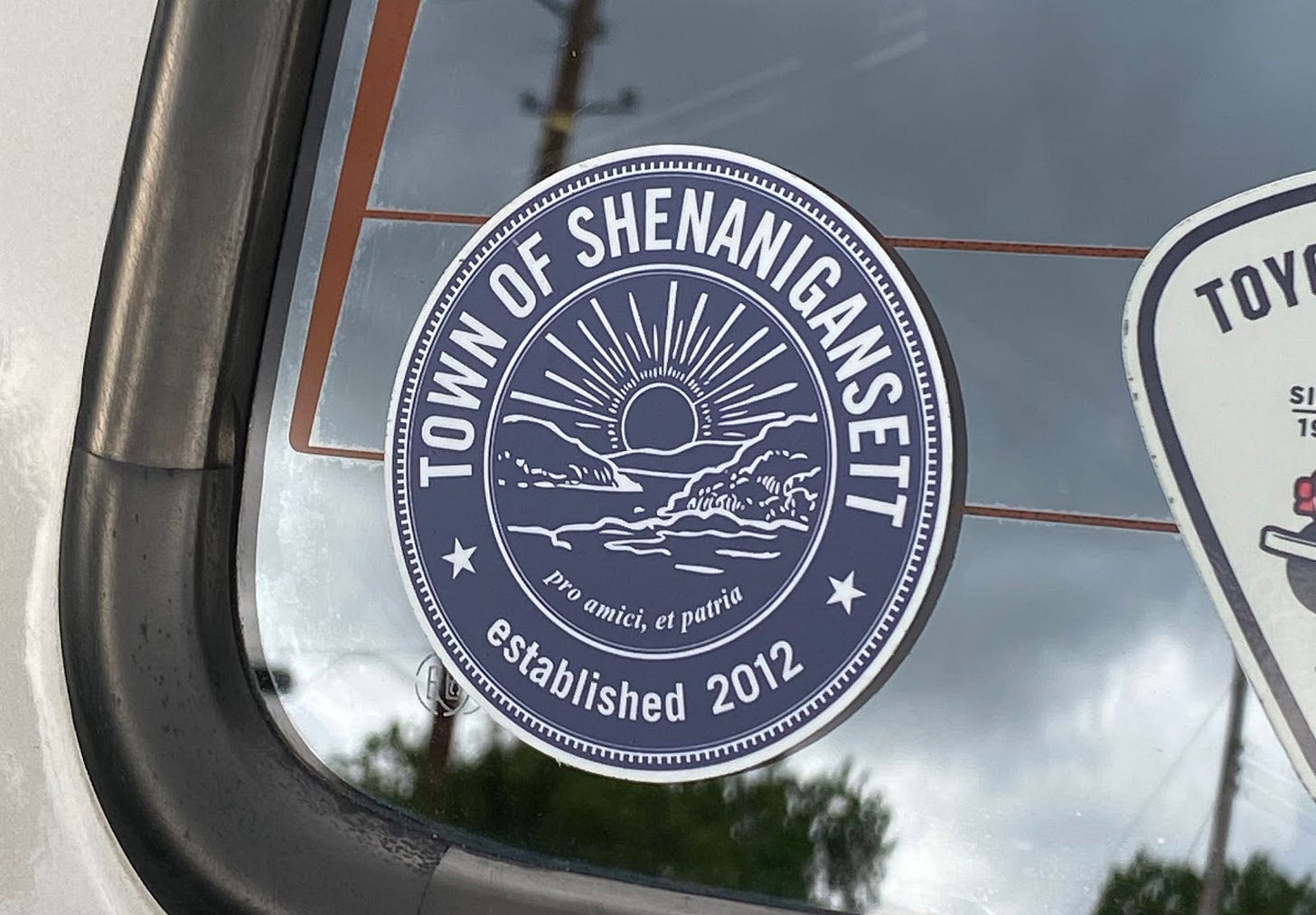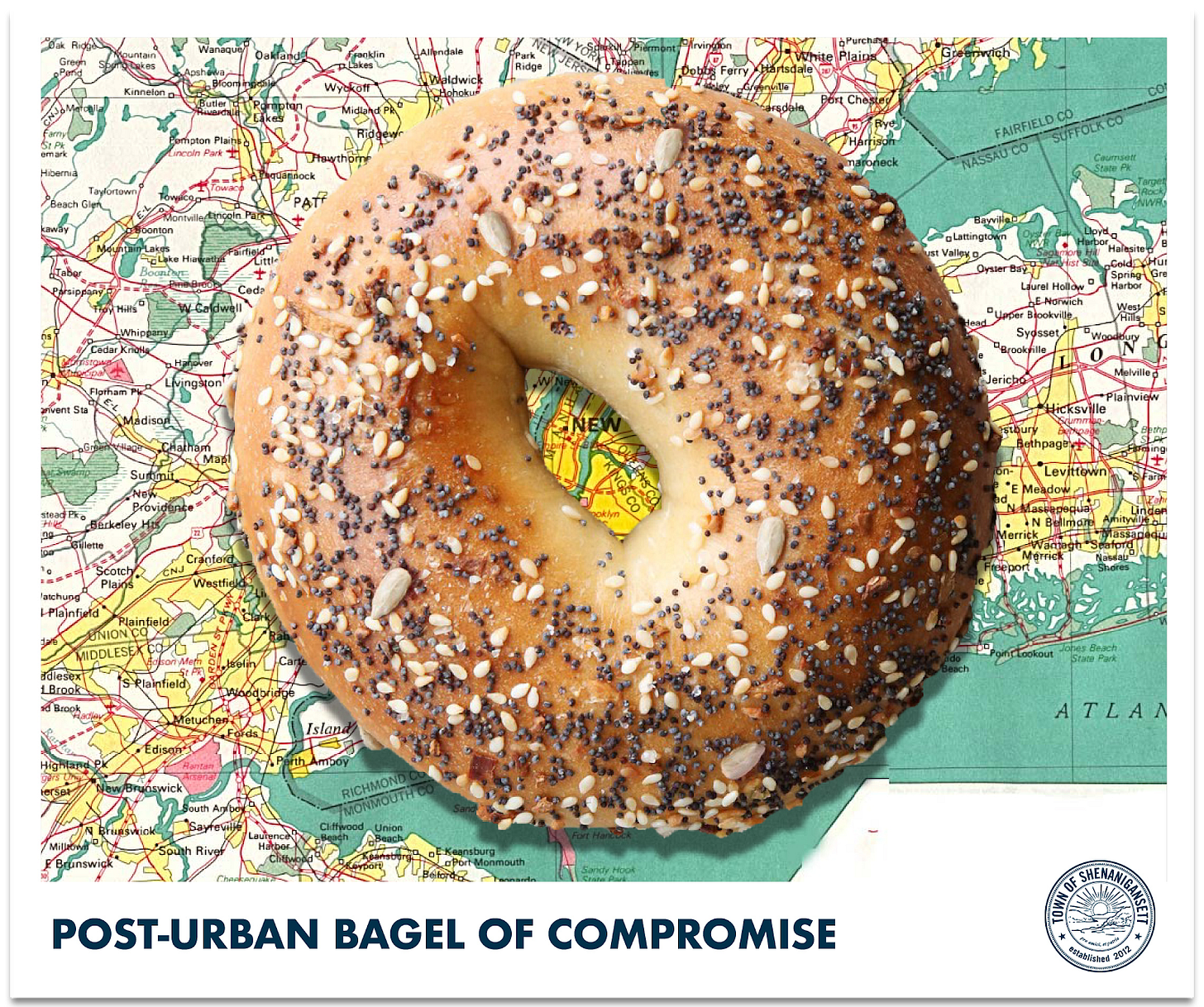Why is this interesting? - The Shenanigansett Edition
On mobility, life choices, and gathering around friends
Ryan McManus (RMM) is a longstanding friend of WITI, an exceptional presenter, and currently works as Design Strategy Director at D-Ford, Ford’s Human-Centered Design group, working on the future of mobility. - Colin (CJN)
Ryan here. As Covid-19 continues to reshape how we work, an increasing number of tech and other white-collar workers (and their employers) are realizing that remote work may be feasible, even productive, indefinitely. Companies like Shopify and Facebook have made returning to the office voluntary, and Twitter has gone one step further, suggesting those that can accomplish their work remotely need not ever return to a life of commuting to and from a random office building.
This will inevitably have various impacts on the choices employees make about the jobs they choose, the salaries they pay, the vehicles they purchase, even the fashion of work attire (why did I buy all these Yeezys if nobody sees my feet?)—but one of the most fascinating things changing is the calculus of where one lives, if one can live anywhere. Already outlets like Bloomberg and The Verge are reporting a talent exodus from Silicon Valley, where a highly restricted housing market and astronomical rents/home prices make the tradeoff of living physically near your employer the most tenuous. In other places, so-called “zoom towns” are popping up near recreational areas. Freed from the constraint of locale, many are wondering: what am I paying for, really? After all, if you can do your job from anywhere, what drives where you choose to live?
Why is this interesting?
This whole situation reminded me of an idea I had many years ago while living in another live-here-for-work pressure cooker: Brooklyn, circa 2006. While one can definitely argue that even minus the availability of work, the merits of living in one of the greatest cities in the world warrants the price of admission, as one ages (and partners/has children) those merits begin to, shall we say, winnow down?
This is the situation I found myself in, as did my circle of friends. We were constantly asking ourselves and each other the question: Is living here really worth it? Hence, Shenanigansett* was born.

This is obviously not a new phenomenon. Urban residents have been chasing the promise of easier lives in the suburbs since William J Levitt’s first house rolled off the assembly line in 1947 (and obviously long before that—I’m sure history would show folks fleeing the rat race of Babylon for a few hectares of barley and a fig tree they could call their own). But when choosing to leave a city, one often makes a compromise: I’ll move, but stay close enough to go back and visit my old crew on the weekends. I can have it all!
The failure mode of this well-meaning and idealistic thought process is that it leads to what I call The Post-Urban Bagel of Compromise—if every friend in your circle makes the same trade-off but ends up in a different town roughly equidistant from the city, you all end up as points on an outer perimeter with a gaping hole in the middle, with little reason to go back. Furthermore, while you might end up being close to some of the members of your tribe, others will now be too far to reliably visit. The center, as it were, cannot hold. Things fall apart.

I knew this innately when I realized that history has another lesson to teach: the adopted homeland. From Theodore Herzl to Donald Judd, making a land your own is a tried-and-true formula for post-urban utopias. This is the essence of Shenanigansett—it is both a place and a plan. A place to relocate, and a plan for culturally grafting your tribe onto a host town, adopting it as your own.
(I should also say, before I go much further into this, that Shenanigansett is as much an intentional satire of how America is formed and reformed around the self-serving needs of individuals as it is a truly earnest and well-meaning way for people seeking a new life with their personal tribes. This should be obvious, but is sometimes, apparently, not. If you find the premise and precept of Shenanigansett abhorrent, well, lean into the satire side of it? - RMM)
Shenanigansett isn’t meant to be a single place for everybody—the basic idea is that you and your friends come to three agreements, and make a plan. The first agreement is: you will leave your city. You don’t all have to leave at once, and you don’t even have to be that comfortable with the idea of leaving yet. But you need to accept its inevitability. The second agreement is easier once you accept the first: that you want to remain close—coming over to each others' houses for cook-outs, coaching each other’s kids at Little League, etc. This means you all want to live in the same place, which leads to the third agreement: a criteria for your new hometown to which you are all aligned?
This can be the hardest part, as hometown ideals tend to be tied up in childhood experiences and that can lend itself to some friction. Most of my friends are from the northeast, so a New England town with access to water (and good internet) with bucolic autumns and snowy winters appealed to most. Your mileage may vary—maybe you’re a bunch of folks from LA who long for the solitude of West Texas. Your Shenanigansett might look very different than ours. But it will have formed around the same principles.
That finally gets to the other part of what Shenanigansett is. A plan. A guide. And because I wanted others in my situation to find their own peace, I decided to open-source it. You can download the plan here.
Good luck! See you in Shenanigansett. (RMM)
*The name “Shenanigansett is entirely fictional, a portmanteau of the Irish idea of “shenanigans” (my people) and the names of towns in New England and eastern Long Island, where I grew up. Fittingly, these town names were “adopted” from the Native American tribes that lived there before. An homage, if you will.
Photo of the Day:

Our friend Dan Frommer writes the excellent New Consumer newsletter, covering emerging behaviors in DTC, tech, and beyond. It is a ridiculously insightful read and worth the money. Here, he examines a wonder of the retail world: The Erewhon beverage case: “Erewhon, for those who haven’t experienced it, is LA’s poshest and most hedonistic natural grocery store, at least three clicks on the meter past Whole Foods. Shopping there feels equally satisfying and hilarious...Start at one end with housemade juices and tonics, progressing through Kombuchatown, sparkling teas, kefirs, CBD infusions, apple cider vinegar drinks, coconut waters, seltzers and sodas, ready-to-drink coffees and matchas blended with every “milk” imaginable. And finally, water world, featuring still and sparkling from multiple continents, plus varieties both “hydrogen infused” and “hyper oxygenated.” (CJN)
Quick Links:
Singapore Airlines is re-starting their direct flight between Changi and Kennedy on November 9 (CJN)
The thriving black market of John Deere Ukranian tractor hacking. (RMM)
Yes, the United States is car-dependent by choice. But it is also car-dependent by law. (RMM)
Thanks for reading,
Noah (NRB) & Colin (CJN) & Ryan (RMM)


